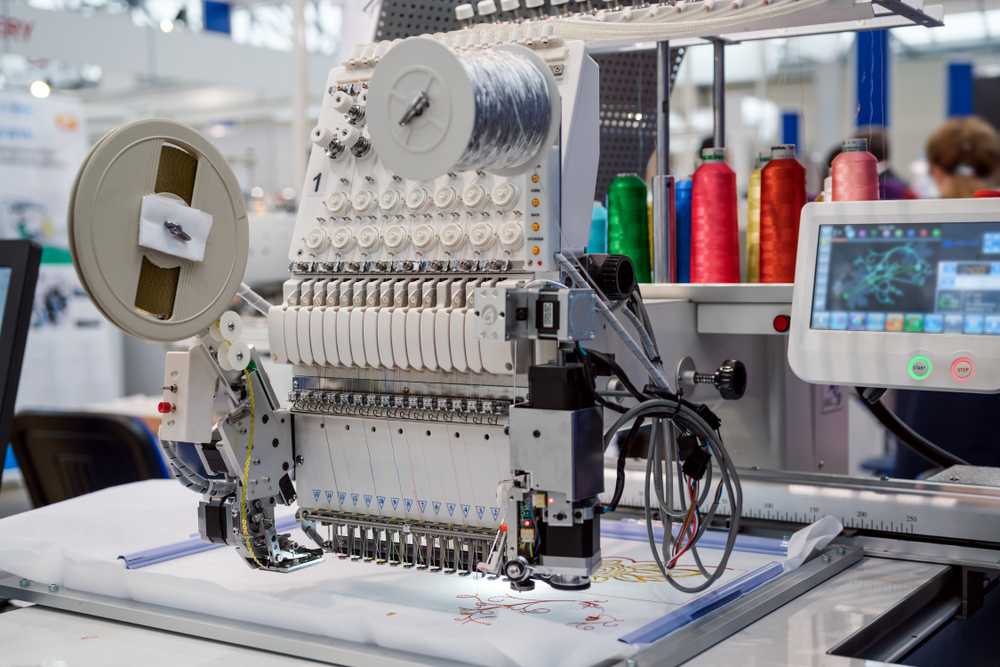Reliable Digitizing for Embroidery: Quick Turn-around
Reliable Digitizing for Embroidery: Quick Turn-around
Blog Article
Mastering the Embroidery Digitizing Process: Your Ultimate Guide
Embroidery digitizing is a meticulous craft that requires precision and expertise to translate detailed layouts right into electronic styles for maker embroidery. As craftsmens get started on this trip to master the needlework digitizing procedure, a thorough understanding of the essentials establishes the foundation for excellence.

Recognizing Needlework Digitizing Basics
Needlework digitizing essentials create the structure whereupon detailed layouts are equated right into machine-readable layouts for accurate stitching. This initial action in the embroidery digitizing procedure is crucial for ensuring that the last embroidered item is a loyal depiction of the original design. Recognizing embroidery digitizing basics entails understanding crucial ideas such as stitch types, stitch instructions, thickness, rug, and pull compensation.
Sew types play a vital duty in identifying the visual and textural outcome of the stitched layout. By choosing the appropriate stitch kind, whether it be satin, fill, or running stitch, digitizers can accomplish the desired effect and boost the general quality of the embroidery. Additionally, stitch direction affects the flow and measurement of the style, while density determines the spacing and insurance coverage of the stitches.
Moreover, padding stitching provides security to the design by safeguarding the material and stopping distortion throughout the needlework process. Draw compensation is an additional important factor to consider to combat the all-natural tendency of textile to contract when sewn. Grasping these needlework digitizing basics is basic for developing professional-quality embroidered items.
Picking the Right Digitizing Software
Choosing the ideal digitizing software program is a critical choice that substantially affects the effectiveness and high quality of the needlework digitizing procedure. Digitizing for Embroidery. When picking the appropriate digitizing software application, it is vital to consider factors such as the intricacy of designs you intend to develop, the user-friendliness of the software application, the level of consumer support provided, and the compatibility with your needlework maker
There are numerous digitizing software application options available out there, ranging from fundamental programs for novices to sophisticated software application for expert digitizers. Some prominent choices include Wilcom EmbroideryStudio, Hatch Needlework Software Program, and PulseID. These software provide a large range of tools and features to aid you develop detailed layouts with ease.
Prior to choosing, it is suggested to check out the different software options via complimentary trials or demos to establish which one ideal fits your requirements. Additionally, reviewing evaluations and seeking recommendations from seasoned digitizers can supply useful understandings into the strengths and weak points of each software (Digitizing for Embroidery). By carefully reviewing your demands and contrasting the functions of different digitizing software program, you can make an educated option that enhances your needlework digitizing workflow
Digitizing Devices and Techniques

Optimizing Layout Setup for Embroidery
Grasping the complexities of style settings is fundamental in achieving optimal cause the needlework digitizing procedure, structure click for info upon the foundation laid by comprehending digitizing tools and methods. When enhancing design settings for embroidery, it is important to consider factors such as stitch kind, thickness, padding, pull payment, and registration. Stitch kind selection impacts the general look of the layout, with alternatives like satin, fill, and running stitches supplying various structures and effects. Thickness refers to the spacing and thickness of stitches, influencing the style's coverage and resilience. Correct rug stitching gives security and avoids textile distortion, particularly for complex layouts or on stretchy materials. Draw compensation readjusts for fabric stretch throughout stitching, guaranteeing accurate style replication. Enrollment settings line up different components of the style properly, preserving total style honesty. By fine-tuning these style setups, embroiderers can improve the quality and accuracy of their embroidered developments.

Troubleshooting Common Digitizing Issues
When encountering typical digitizing concerns during the needlework process, it is essential to comprehend the origin and implement efficient solutions quickly. One usual issue is stitch thickness issues, where stitches might be as well thick, causing the material to tighten, or too sporadic, bring about spaces in the layout. Adjusting the stitch thickness setups in the digitizing software can help solve this concern.
Another regular difficulty is string breaks during the embroidery procedure. This can take place due to different factors such as wrong stress settings, dull needles, or utilizing low-grade string. Ensuring proper maintenance of the needlework device, consisting of normal needle adjustments and tension adjustments, can reduce the incident of string breaks.
In addition, design registration mistakes can result internet in misaligned elements within the embroidery layout. Checking the style placement in the digitizing software and making needed changes before sewing can aid in preventing this issue. By resolving these common digitizing problems immediately and effectively, you can make certain a smoother embroidery process and top notch completed items.
Verdict
Finally, click reference understanding the embroidery digitizing procedure calls for a solid understanding of the fundamentals, the appropriate selection of software application, and understanding of tools and techniques. Optimizing design setups and repairing common digitizing issues are crucial steps in making certain top notch embroidery results. By adhering to these steps vigilantly, one can achieve accuracy and effectiveness in the digitizing procedure.
Report this page